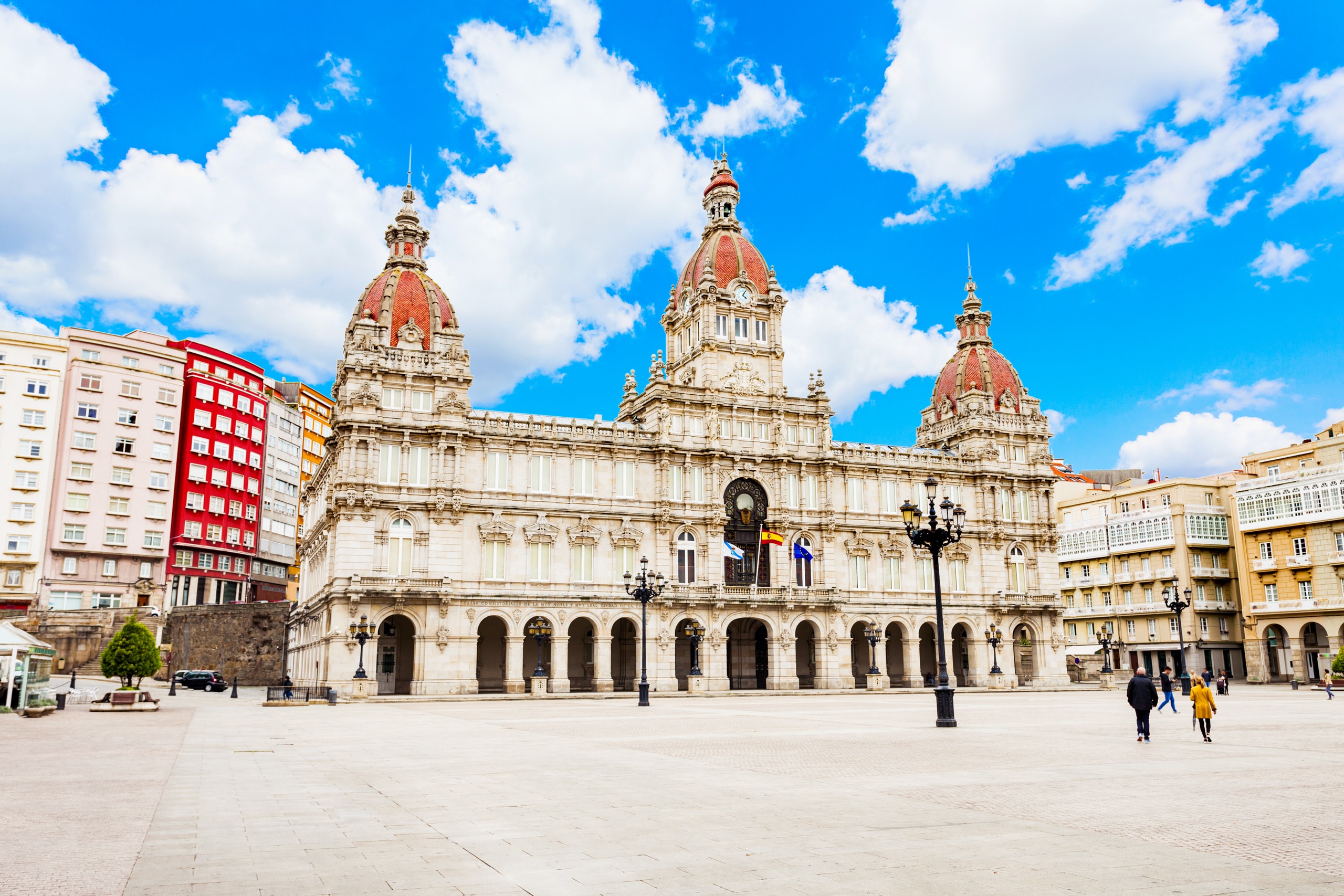
La Coruna, Spain (for Santiago de Compostela)
La Coruna, Spain (for Santiago de Compostela)
With La Coruña's impressive and extensive history, visitors are often surprised at how modern the city is. It was from here that, in 1588, Spain sent its "invincible" Armada sailing. A year later, Sir Francis Drake sent those ships scrambling, burning most of the city just for good measure. Drake's invasion was ultimately repelled by the peoples of La Coruña, inspired by the local heroine, María Pita.
In the process, La Coruña lost all of its Roman antiquities, including the Torre de Hercules, the present day monument as undergone several transformations over the centuries, the most important one carried out in 1788 by the engineer Eustaquio Giannini, who built the current façades around what remained of the Roman lighthouse, now declared a World Heritage Site. The city does, however, still offer incredible vistas, situated as it is on an outstretch of land blanketed on each side by the sea.
Be sure to visit the Ciudad Vieja, the small old town that watches over the Darsena de La Marina harbor. Here you will find many pleasant cafes from which you can people-watch. Notice that most of the streets are lined with glass covered balconies built for protection again the city's winds and rain.
The port of La Coruña serves as your gateway to Santiago de Compostela, one of the greatest pilgrimages of the Middle Ages. As the site of the supposed shrine of St. James the Apostle, it is the third holiest site in all Christendom, following Jerusalem and Rome. Pilgrims believed that making the journey here would reduce their sentence in purgatory by one-half.
Points of Interest
- Santiago de Compostela
- Pilgrim Museum
- Tower of Hercules
- Plaza del Obradoiro
- Old Town
- Plaza Azcarraga
- Sargadelos Ceramics
- Betanzos
More about La Coruna, Spain (for Santiago de Compostela) Points of Interest
-
Santiago de Compostela -
Capital of Galicia, Spain, this city is dedicated to honoring St. James, or Santiago - the first martyred apostle. For 2,000 years, pilgrims trekked great distances to walk St. James Way.
-
Pilgrim Museum -
St. James Cathedral has a subterranean museum displaying a collection of tapestries and archaeological pieces. The 9th-century crypt is the final destination of pilgrims.
-
Tower of Hercules -
This epic 180-foot-tall lighthouse is a World Heritage Site and Spanish National Monument. Built by the Romans, it's the world's oldest existing lighthouse, fully operational, every day, for nearly 2,000 years.
-
Plaza del Obradoiro -
This is one of the most jaw-dropping destinations on Earth. The burial place of St. James, it is a stunning collection of statues, fountains, facades, and, of course, the epic Cathedral.
-
Old Town -
Roman protective walls standing after millennia, churches, the Military Museum, shops, Galician writers' mansion and nearby Constitution Square, Old Town is a delightful stroll through Galician history.
-
Plaza Azcarraga -
With the "desire fountain" in the centre, and the General Azcarraga Headquarters, a neoclassical palace built in 1740 to become the seat for the General Captaincy of the Galician Kingdom, to one side, Azcarraga Square is a series of snapshots into Coruña's life, from ancient to new. Shaded by centuries-old ash and plane trees, it's been a marketplace, festival centre and a shady garden repose.
-
Sargadelos Ceramics -
Some of the world's finest pottery comes from this 200-year-old Galician institution. More than a factory or store,it's a living cultural and artistic design center, offering scenic beauty and Europe's finest porcelain.
-
Betanzos -
Once a thriving port rivaling La Coruña, Betanzos has one of the best preserved old quarters in Galicia and is renowned for its welcoming taverns with regional wines and local delicacies. Two stunning churches, Santa María de Azogue and San Francisco are the main attractions of this beautiful Roman town.